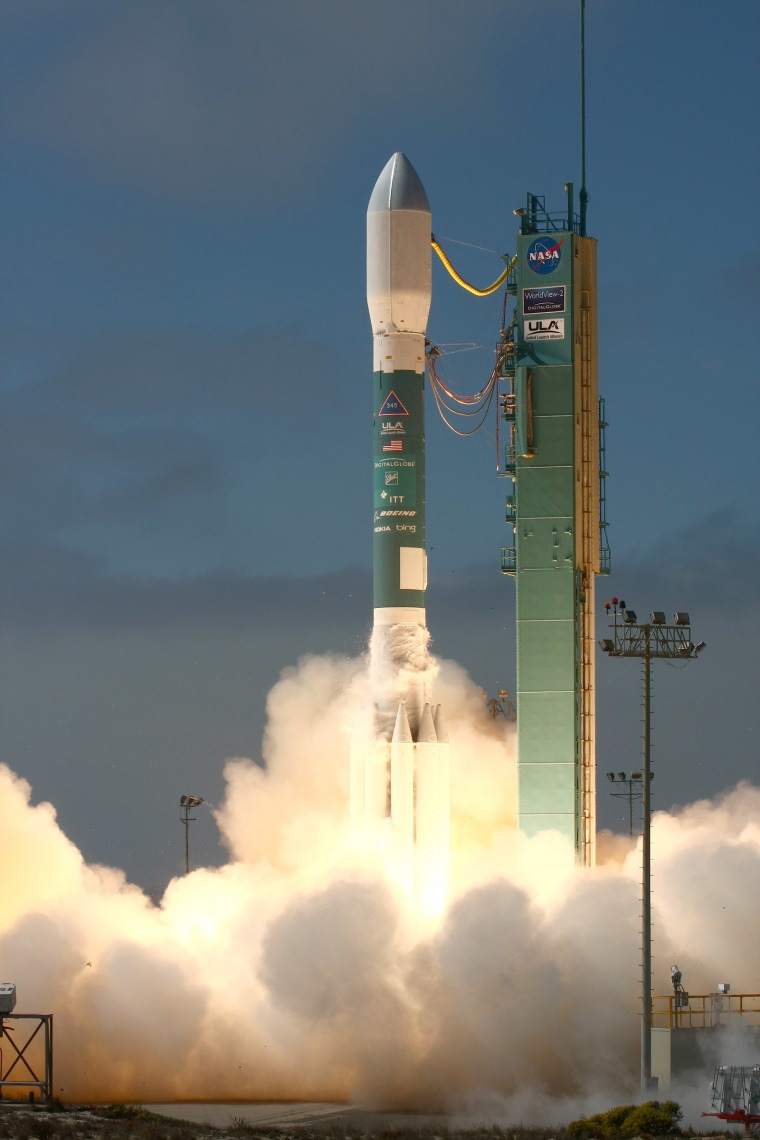A high-resolution commercial Earth-imaging satellite was launched into polar orbit Thursday.
A Delta 2 rocket carrying DigitalGlobe Inc.’s WorldView-2 satellite lifted off at 11:51 a.m. PT (2:51 p.m. ET) and arced south over the Pacific Ocean.
The satellite separated from the rocket and entered an orbit 477 miles (763 kilometers) high.
The spacecraft is DigitalGlobe’s third remote-sensing satellite. It was designed to provide images with higher levels of feature identification and to more accurately show the world’s natural colors.
Company spokeswoman KC Higgins said the launch was a success, and WorldView-2’s first commercial imagery is expected to be available in 90 days.
WorldView-2 effectively doubles the company’s imaging capacity to 500 million square kilometers — or 193 square miles — a day, DigitalGlobe CEO Jill Smith said.
“We can update or refresh our mapping of the globe at least on an annual basis,” she said.
The new satellite will have eight spectral bands, allowing it to capture and transmit more accurate and subtle color than traditional four-band orbiters, she said.
WorldView-2 will also allow DigitalGlobe to launch a new business line, offering foreign defense agencies to direct the satellite’s cameras for images they want.
Smith said all the company’s customers have to be approved by the U.S. government, and no hostile nations would be allowed to use the service.
Longmont, Colo.-based DigitalGlobe provides world images for defense and intelligence, civil governments and commercial clients. It will report its third-quarter financial results on Nov. 9.
WorldView-2 was built by Ball Aerospace of Boulder, Colo. The Delta 2 was provided by the United Launch Alliance, and launch services were administered by Boeing.
Chief Financial Officer Yancey Spruill said the satellite cost $450 million, including launch fees. He declined to give a breakdown.
The new satellite gives the company enough capacity to meet its targets for several years, Spruill said.
